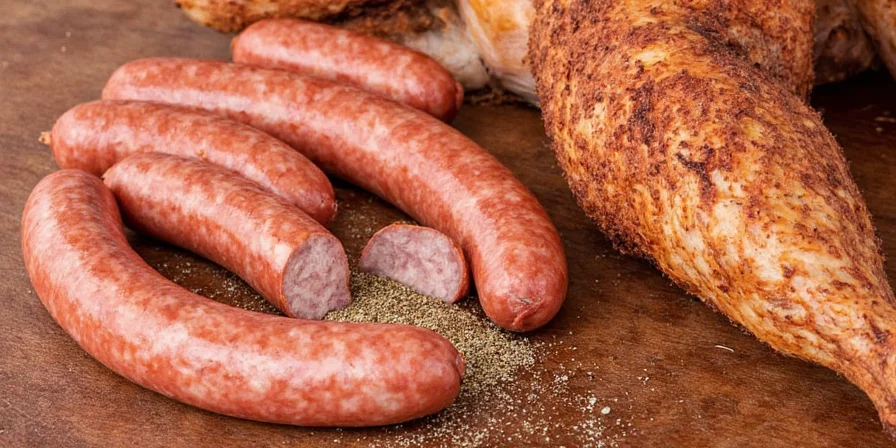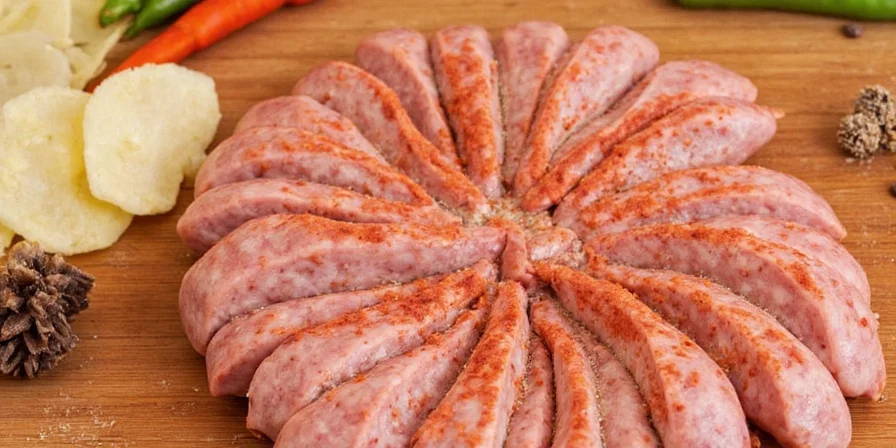Sausage Seasoning Showdown: The Turkey Truth Behind Your Morning Sizzle!
Ever wake up craving that savory, spiced-up flavor of breakfast sausage but realize you’re out of pork? Don’t panic — it’s time to give turkey a whirl! This article is your ultimate guide to mastering turkey breakfast sausage seasoning. Whether you’re a seasoned pro or a kitchen newbie with a cast iron skillet and big dreams, we’ve got the tips, tricks, and spice breakdowns you need to make every bite pop.
Table of Contents
- Why Go Turkey?
- The Spice Lineup: What You Need
- Mixing the Magic: Pro Tips for Perfect Blends
- Shaping It Up: Patties vs. Links vs. Bulk
- Cook to Perfection: Stovetop Secrets
- Flavor Fusion: Regional Twists & Creative Ideas
- Storage Hacks: Keep It Fresh Without Flavor Fade
- FAQs: Spicing Up the Conversation
Why Go Turkey?
Turkey isn’t just for Thanksgiving anymore! If you're looking for a leaner, healthier alternative to traditional pork sausage without sacrificing flavor, turkey might be your new best friend. Plus, it’s incredibly versatile and loves to soak up spices like nobody’s business.

The Spice Lineup: What You Need
The heart of any great breakfast sausage is its seasoning blend. Here’s a quick look at the usual suspects:
- Fennel Seeds – Adds that classic ‘Italian’ note (even if you’re not Italian)
- Black Pepper – A must-have for warmth and bite
- Garlic Powder – For depth and savoriness
- Dried Sage – That earthy, rustic touch
- Paprika – Smoky or sweet, it brings color and complexity
- Nutmeg – Just a pinch gives that secret “breakfast vibe”
- Salt – The MVP for balancing flavors
| Spice | Quantity per lb of meat | Flavor Profile |
|---|---|---|
| Fennel Seeds | 1 tsp ground | Anise-like, aromatic |
| Black Pepper | 1/2 tsp | Sharp, spicy warmth |
| Garlic Powder | 1/2 tsp | Earthy, savory |
| Sage | 1 tsp | Herbaceous, woodsy |
| Paprika | 1 tsp | Smoky or sweet, adds color |
| Nutmeg | 1/4 tsp | Warm, slightly sweet |
| Salt | 1 tsp | Enhances all other flavors |

Mixing the Magic: Pro Tips for Perfect Blends
Mixing your own turkey breakfast sausage seasoning is easier than convincing your cat that the vacuum cleaner is harmless. But here are some pro tips to get it just right:
- Grind Whole Spices Yourself: Freshly ground fennel seeds have more aroma than pre-ground. Use a spice grinder or mortar and pestle.
- Balance Is Key: Too much sage can overwhelm. Taste before committing and adjust as needed.
- Add Acid: A splash of apple cider vinegar or lemon juice brightens everything up and helps preserve freshness.
- Cool Before Mixing: Chill your turkey meat first — this helps the seasoning bind better and prevents clumping.
- Let It Rest: Let the seasoned meat rest in the fridge for at least an hour before cooking. This allows flavors to meld beautifully.

Shaping It Up: Patties vs. Links vs. Bulk
You don’t have to stick to links when making turkey sausage. Here’s how to shape your morning protein based on your mood:
- Patties: Easy to cook and perfect for sandwiches or serving alongside eggs.
- Links: Use natural casings if you want that classic snap and texture (but they do take a bit of practice).
- Bulk: Great for casseroles, biscuits and gravy, or crumbling into breakfast bowls.
Cook to Perfection: Stovetop Secrets
Cooking turkey breakfast sausage isn’t rocket science, but there are definitely ways to avoid rubbery or bland results. Here's how to nail it:
- Use Medium Heat: Avoid burning the outside while undercooking the inside.
- Don’t Crowd the Pan: Give patties room to breathe so they brown evenly.
- Flip Once: Let them cook through on one side before flipping.
- Internal Temp Check: Cook to at least 165°F (74°C) for food safety.
- Rest Before Serving: Letting them sit for 2–3 minutes keeps juices locked in.

Flavor Fusion: Regional Twists & Creative Ideas
Once you've mastered the basics, let’s play with fire. Try these regional or creative twists to jazz up your turkey breakfast sausage seasoning:
- Southwestern Style: Add chili powder, cumin, and smoked paprika for a kick.
- Southern Soul: Mix in dried onion, garlic, thyme, and a dash of hot sauce.
- Asian-Inspired: Swap sage with ginger, star anise, and five-spice powder.
- Sweet Maple: Stir in a pinch of maple sugar or real maple syrup for a sweet-savory twist.
- Everything Bagel: Yes, really! Toss in sesame seeds, garlic, onion, and a bit of salt for that NYC flair.

Storage Hacks: Keep It Fresh Without Flavor Fade
If you made a batch too good to finish in one sitting, here’s how to store your turkey sausage:
- Refrigerate: Store in an airtight container for up to 3 days.
- Freeze: Flatten bulk sausage or separate patties with parchment paper before freezing — easy grab-and-go portions!
- Vacuum Seal: Ideal for longer storage (if you’re feeling fancy).
- Thaw Safely: Never thaw at room temperature. Use the fridge overnight or cold water method.
FAQs: Spicing Up the Conversation
Q: Can I use fresh herbs instead of dried?
A: Absolutely! Use about twice the amount since fresh herbs are milder.
Q: My sausage tastes bland. What did I do wrong?
A: Did you taste before cooking? Adjust salt and spices early. Also, was the meat too cold? Cold meat can mute flavor absorption.
Q: Can I make this gluten-free?
A: Yep! Make sure your seasonings don’t contain additives with gluten. Most pure spices are naturally GF.
Q: How do I make turkey sausage less dry?
A: Add a small amount of fat like olive oil or butter to keep moisture locked in.
Conclusion: Spice Up Your Life with Turkey Breakfast Sausage Seasoning
So there you have it — a complete roadmap to mastering turkey breakfast sausage seasoning. Whether you're health-conscious, a flavor adventurer, or just curious what turkey can do beyond Thanksgiving, now’s your chance to experiment and impress. With the right spice mix and a little love, your breakfast plate will sing with flavor. Happy cooking, and may your mornings always smell amazing!

Pro Tip: Label your homemade sausage mixes! Create cute tags with flavor names and dates for easy future reference.











 浙公网安备
33010002000092号
浙公网安备
33010002000092号 浙B2-20120091-4
浙B2-20120091-4